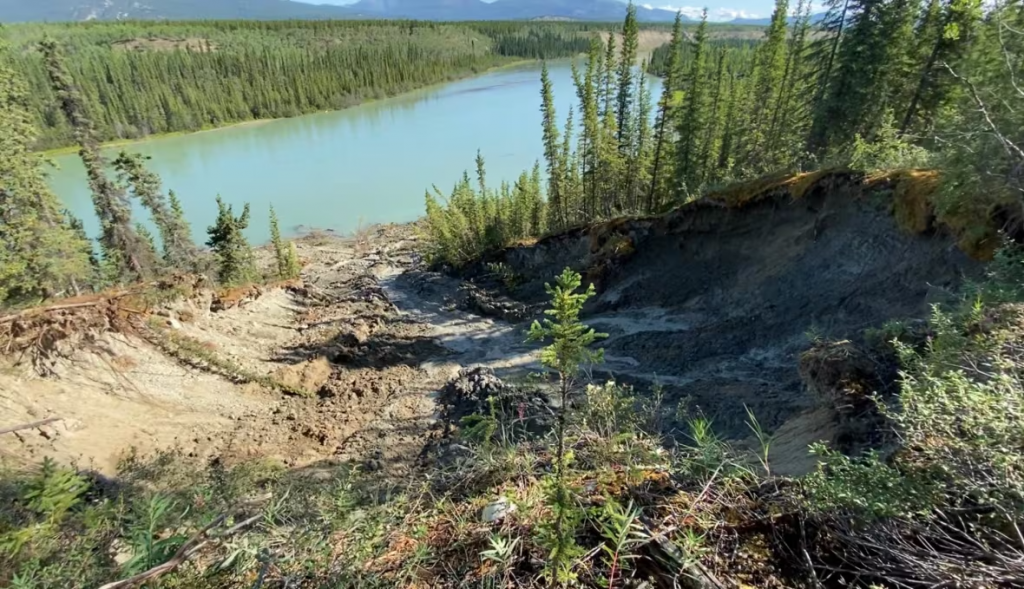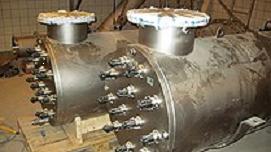Study warns thawing permafrost could release substantial mercury in Yukon River

‘When we lose that permafrost, you have these large deposits of sediment that are going into the river’
A new study is warning about significant stores of mercury that could be released into the environment as permafrost thaws.
The mercury is stored in sediment along the Yukon River’s banks, and as the permafrost that holds that sediment in place thaws, it’s threatening to release thousands of years’ worth of mercury into one of the North’s biggest waterways.
Isabel Smith is a doctoral candidate with the University of Southern California and one of the co-authors of the study published in August in the peer-reviewed journal, Environmental Research Letters.
“One of the things permafrost is doing is stabilizing some of these banks,” she explained. “And when we lose that permafrost, you have these large deposits of sediment that are going into the river.”

According to Smith, due to the chemical properties of the element and air circulation, a significant amount of mercury ends up in the Arctic.
“The mercury that’s specifically stored in permafrost is coming from the atmosphere and plants breathe it in and then store it,” said Smith.
“Then when these plants die, rather than decaying like they would normally do in warmer climates, they’re actually frozen and preserved.
“So over time you have these compounding stores of mercury-rich soils that have been formed for thousands of years.”
The study involved collaborators from MIT, the California Institute of Technology, Delft University, and the Yukon River Inter-Tribal Watershed Council. It involved monitoring river erosion through satellite imagery and collecting and analyzing sediment samples from several locations in Alaska’s Yukon River basin.
Previous research has determined Northern Hemisphere permafrost contains the world’s largest reservoir of mercury. Now, researchers are looking to better understand the extent of the risk.

Edda Mutter is a science director with the Yukon River Inter-Tribal Watershed Council, an Indigenous non-profit with members from the Yukon and Alaska.
“We knew that there is substantial mercury within the core and permafrost,” she said. “But what we don’t really quite understand is how much of that mercury is potentially mobile.”
The new research paper states that “a significant amount of [mercury] is liberated from permafrost during bank erosion,” and that river migration rates are affecting the extent of mercury moving through the waterway.
Mutter says future work will likely focus on understanding how much of that mercury is methylmercury, which forms when microbes react with naturally-occurring mercury.
“That is really the concerning species of mercury which poses the threat,” she said. “It’s highly toxic.”
Methylmercury is more easily absorbed into the bloodstream and bioaccumulates, which means that eating larger animals and fish can present real dangers to humans.
While it may be decades before the impacts are seen, the paper states mercury release could represent a significant threat to human health.
“On the Alaskan side, many communities still obtain their drinking water directly from the river,” said Mutter. “It also poses a danger to a subsistence way of life.
Mutter says the research is prompting new questions for communities living near the Yukon River, who are already struggling with the infrastructure impacts as a result of increasing erosion.
“How can we be proactive and look into improving water treatment systems, drinking water treatment systems, but also how we address the larger topic… [of] climate change?”
Related stories from around the North:
Canada: Québec funds research to adapt Nunavik public housing to thawing permafrost, CBC News
Norway: Thawing permafrost melts ground under homes and around Global Seed Vault in Svalbard, The Independent Barents Observer
Russia: Melting permafrost may release industrial pollutants at Arctic sites: study, Eye on the Arctic
United States: 30–50% of critical northern infrastructure could be at high risk by 2050 due to warming, says study, Eye on the Arctic



